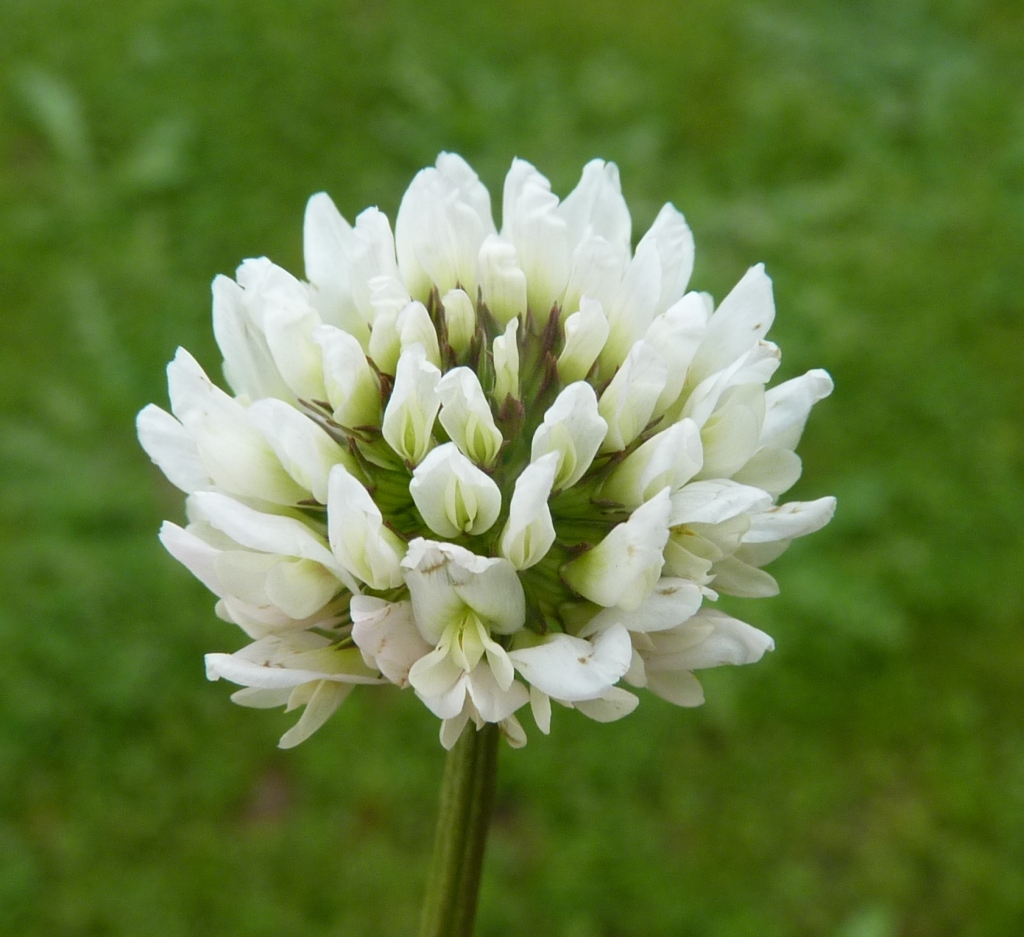Trifolium repens var. repens
White CloverProstrate perennial herb; stems rhizomatous, 10–30 cm long, glabrous or glabrescent, rooting at nodes. Leaves palmately trifoliolate, long-petiolate; leaflets broad-obovate to orbicular, 6–40 mm long, 10–30 mm wide, glabrous, prominently veined, often with a pale crescent on upper surface, margins serrulate, apex often emarginate; stipules membranous, sheathing. Inflorescence with more than 20 flowers, axillary, umbellate or globular, 15–35 mm long, 15–35 mm wide, pedunculate; flowers pedicellate. Calyx 3–5 mm long, tube campanulate, usually 10-veined, throat open, teeth about as long as tube, unequal, spiny; corolla 4–13 mm long, white, yellow or pink, persistent; standard ovate-lanceolate, apex rounded. Pod linear-oblong, 4–6 mm long, exserted from calyx tube; seeds 3 or 4, ovoid or reniform, c. 1 mm long, brownish, smooth. Flowers mainly Aug.–Feb.
LoM, MuM, Wim, GleP, Brid, VVP, VRiv, MuF, GipP, OtP, WaP, Gold, CVU, GGr, DunT, NIS, EGL, EGU, WPro, HSF, HNF, OtR, Strz, MonT, HFE, VAlp. Also naturalised WA, Qld, ACT. Native to northern Africa, Europe, temperate Asia. Widely cultivated throughout the world and an important fodder crop; established throughout much of Victoria and readily invading parks, gardens and playing fields in urban areas.
Zohary & Heller (1984) recognize 8 varieties based on differences in flower colour and a number of morphological features. Victorian material fits the type variety most comfortably although a great deal of variation is displayed by specimens found in this State.
Jeanes, J.A. (1996). Fabaceae. In: Walsh, N.G.; Entwisle, T.J., Flora of Victoria Vol. 3, Dicotyledons Winteraceae to Myrtaceae, pp. 663–829. Inkata Press, Melbourne.
 Spinning
SpinningZohary M.; Heller, D. (1984). The genus Trifolium. Israel Academy of Sciences and Humanities, Jerusalem.
